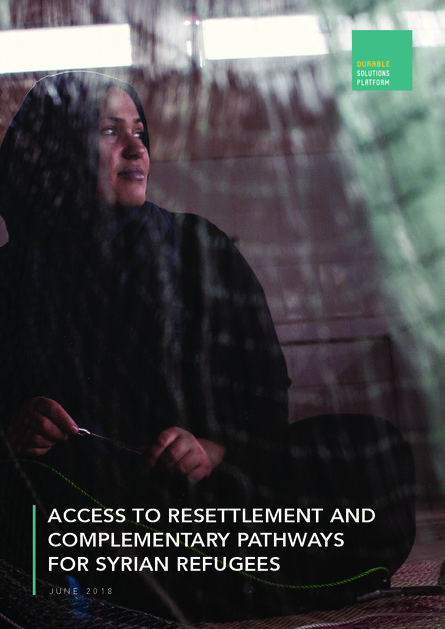
In September 2016, 193 governments made a commitment to explore complementary pathways as alternative means of achieving a temporary or durable solution for refugees in the New York Declaration for Refugees and Migrants and the annexed Comprehensive Refugee Response Framework (CRRF). The expressed aim is to provide resettlement places and complementary pathways “on a scale that would enable the annual resettlement needs (…) to be met.” Among the listed complementary pathways for refugees are: humanitarian admission programmes, (medical) evacuation programmes, family reunification, private sponsorship, labour mobility and scholarships and student visas. Since 2016, complementary pathways have been expanded or newly developed as pilot programmes by states, the United Nations High Commission for Refugees (UNHCR), international agencies and Non-Governmental Organisations (NGOs). At this point, with states and the UN focused on the Global Compacts for Refugees and for Migrants, initiatives are underway to take stock, and plan for improvements to access to third country protection and solutions for Syrians and others.
The purpose of this research is to contribute information on, and thinking about existing solutions and emerging complementary pathways, particularly for the benefit of organisations involved with refugees in Jordan, the Middle East region and more broadly. The research aims to highlight important design and practical considerations to maximise refugee access and protection while taking refugees’ perspectives into consideration. The outcomes include an exploration of the ways in which organisations can form networks and partnerships to further develop complementary pathways as viable means for more Syrian refugees to achieve a sustainable or durable solution to their displacement needs.
To this end, this research aims to:
- Offer an overview of various complementary pathways currently available to Syrian refugees and evaluate their degree of accessibility and inclusion;
- Gauge refugees’ perceptions towards resettlement and complementary pathways and their perceived access and concerns, intentions and plans when it comes to finding a (durable) solution to their displacement; and
- Identify and develop innovative, key and concrete recommendations that help design new State policies and NGO programming and advocacy on resettlement and complementary pathways.
